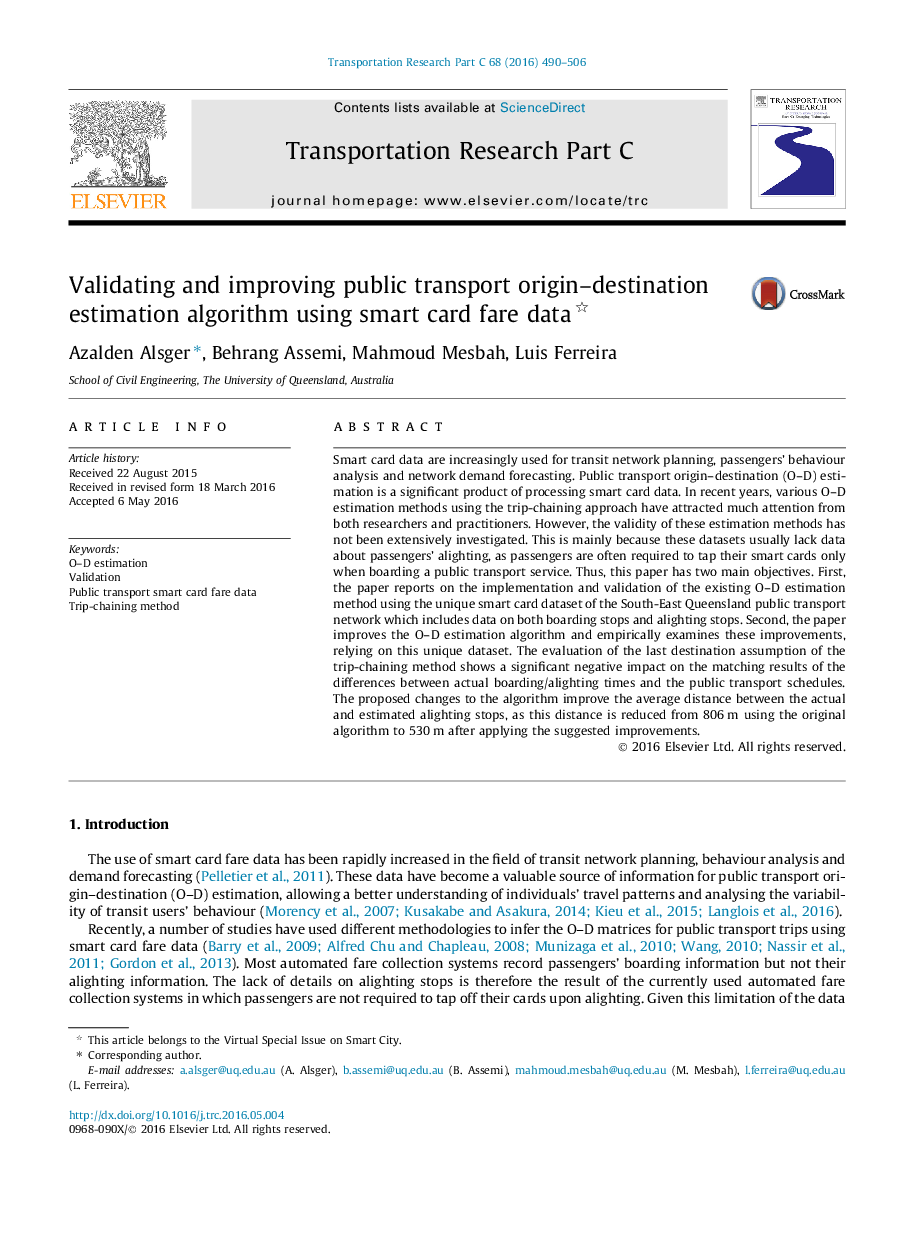| Article ID | Journal | Published Year | Pages | File Type |
|---|---|---|---|---|
| 6936435 | Transportation Research Part C: Emerging Technologies | 2016 | 17 Pages |
Abstract
Smart card data are increasingly used for transit network planning, passengers' behaviour analysis and network demand forecasting. Public transport origin-destination (O-D) estimation is a significant product of processing smart card data. In recent years, various O-D estimation methods using the trip-chaining approach have attracted much attention from both researchers and practitioners. However, the validity of these estimation methods has not been extensively investigated. This is mainly because these datasets usually lack data about passengers' alighting, as passengers are often required to tap their smart cards only when boarding a public transport service. Thus, this paper has two main objectives. First, the paper reports on the implementation and validation of the existing O-D estimation method using the unique smart card dataset of the South-East Queensland public transport network which includes data on both boarding stops and alighting stops. Second, the paper improves the O-D estimation algorithm and empirically examines these improvements, relying on this unique dataset. The evaluation of the last destination assumption of the trip-chaining method shows a significant negative impact on the matching results of the differences between actual boarding/alighting times and the public transport schedules. The proposed changes to the algorithm improve the average distance between the actual and estimated alighting stops, as this distance is reduced from 806Â m using the original algorithm to 530Â m after applying the suggested improvements.
Keywords
Related Topics
Physical Sciences and Engineering
Computer Science
Computer Science Applications
Authors
Azalden Alsger, Behrang Assemi, Mahmoud Mesbah, Luis Ferreira,
